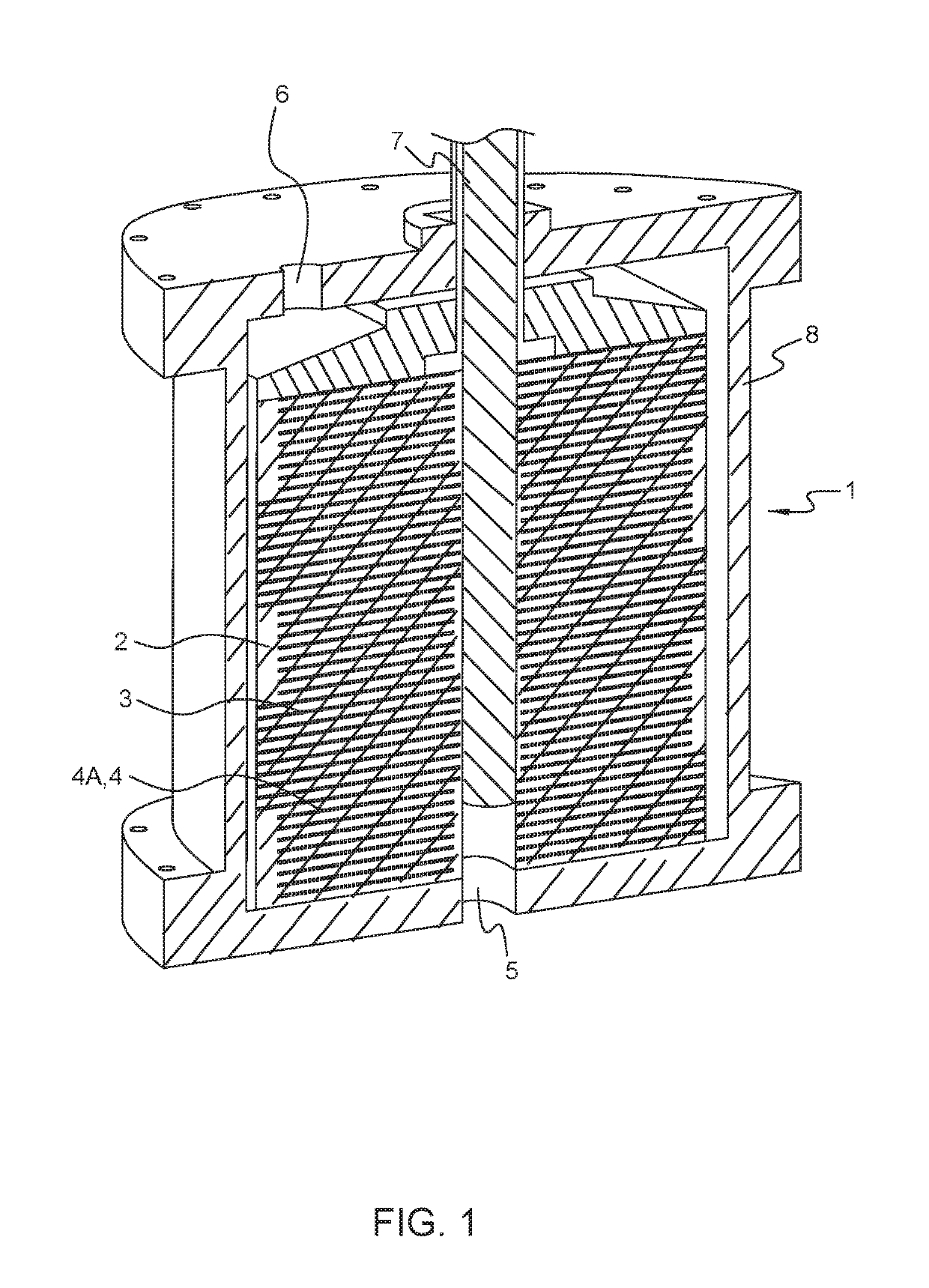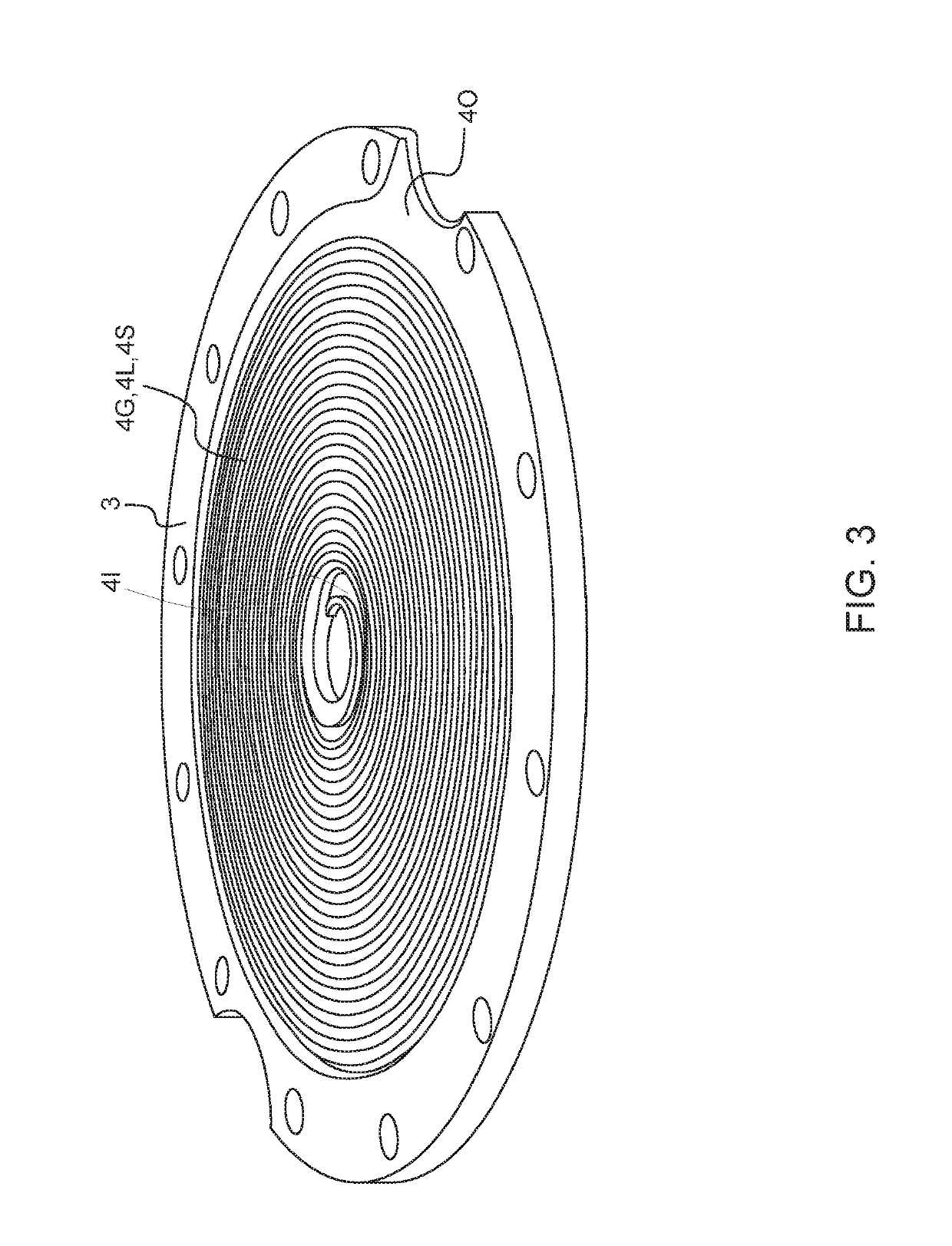Polymer flow control device
a technology of flow control and polymer, which is applied in fluid dynamics, sealing/packing, and well accessories, etc., can solve the problems of poor macroscopic sweep efficiency, inability to stabilize fronts and viscous fingering, etc., and achieves reduction of axial forces, reduces shear, and reduces polymer degradation.
- Summary
- Abstract
- Description
- Claims
- Application Information
AI Technical Summary
Benefits of technology
Problems solved by technology
Method used
Image
Examples
Embodiment Construction
[0066]FIG. 1 illustrates a water injection flow control device 1 of the invention. The device comprises a stack 2 of discs 3, the discs as stacked comprises in substance spiral shaped flow conduits 4, said spiral shaped flow conduits comprises sections in series with alternating large and small cross section area for flow 4A, wherein a ratio of at least one dimension in the flow conduit transverse to a central flow line through said sections of large and small cross section areas for flow is in a range 1.05-10. The device comprises an inlet 5, or part thereof, coupled to an inner end of the spiral shaped flow conduits, an annular outlet 6 operatively coupled to an outer end of said conduits, and a control member 7 arranged in the inlet. In addition, the device comprises a housing 8, containing the stack of discs.
[0067]The illustrated embodiment of the device of the invention comprises a stack of discs with a spiral shaped groove on one side of each disc, the other side is flat or pl...
PUM
 Login to View More
Login to View More Abstract
Description
Claims
Application Information
 Login to View More
Login to View More - R&D
- Intellectual Property
- Life Sciences
- Materials
- Tech Scout
- Unparalleled Data Quality
- Higher Quality Content
- 60% Fewer Hallucinations
Browse by: Latest US Patents, China's latest patents, Technical Efficacy Thesaurus, Application Domain, Technology Topic, Popular Technical Reports.
© 2025 PatSnap. All rights reserved.Legal|Privacy policy|Modern Slavery Act Transparency Statement|Sitemap|About US| Contact US: help@patsnap.com



